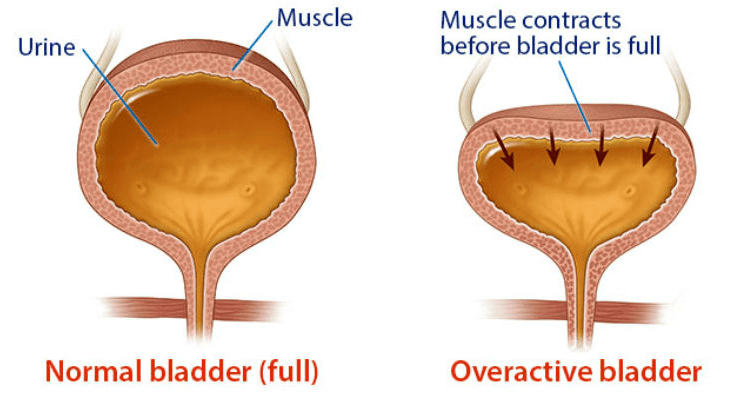Visit Time
Dr. Debabrata Sabat is available for consultations during the following hours:
Monday - Friday
8:00 - 4:00

Overactive Bladder: It’s More Common Than You Think
Do you often feel the urge to urinate even when your bladder isn’t full? Do you wake up several times a night to use the bathroom or worry about leaking urine if you don’t get to the toilet in time? If yes, you might be dealing with Overactive Bladder (OAB) — a condition that affects millions but is rarely discussed openly.
Overactive bladder isn’t a disease itself, but a group of urinary symptoms. It happens when the bladder muscles contract involuntarily, leading to sudden, strong urges to urinate — often with urgency, frequent trips to the bathroom, and sometimes urge incontinence (unintentional leakage).
A Widespread Yet Underreported Issue
Overactive bladder affects more than 40 million people in India alone, with both men and women impacted, especially those over 40. Yet many feel too embarrassed to seek help, assuming it’s just part of aging. This delay can harm quality of life, causing anxiety, poor sleep, social withdrawal, and even depression.
Recognizing the Symptoms
Key signs of OAB include:
- Urgency: A sudden, intense need to urinate right away.
- Frequency: Needing to urinate more than 8 times in 24 hours.
- Nocturia: Waking up more than once per night to urinate.
- Urge incontinence: Involuntary leakage after a strong urge.
These symptoms can vary in severity but usually don’t go away without proper treatment.
What Causes Overactive Bladder?
Possible causes include:
- Neurological conditions (stroke, Parkinson’s disease, multiple sclerosis)
- Diabetes
- Urinary tract infections
- Enlarged prostate in men
- Hormonal changes, especially after menopause
- Obesity or unhealthy fluid habits
In some cases, the exact cause isn’t known — but treatment can still help manage symptoms.
Treatment and Management Options
The good news? Overactive bladder is treatable. A urologist can design a personalized plan that may include:
- Lifestyle changes: Reducing caffeine and alcohol, managing fluids.
- Bladder training: Gradually increasing the time between trips to the bathroom.
- Pelvic floor exercises (Kegels): Strengthen muscles that help control urination.
- Medications: Relax bladder muscles and reduce urgency.
- Advanced therapies: Botox injections, nerve stimulation, or minimally invasive surgery for severe cases.
When to See a Urologist
If bladder symptoms disrupt your daily life, don’t ignore them. Early medical advice can prevent complications and help you regain control.
Conclusion
Overactive bladder is far more common than many realize — and often very manageable. By raising awareness, breaking the stigma, and seeking timely treatment, you can restore confidence, sleep better, and enjoy life without always worrying about the nearest restroom.